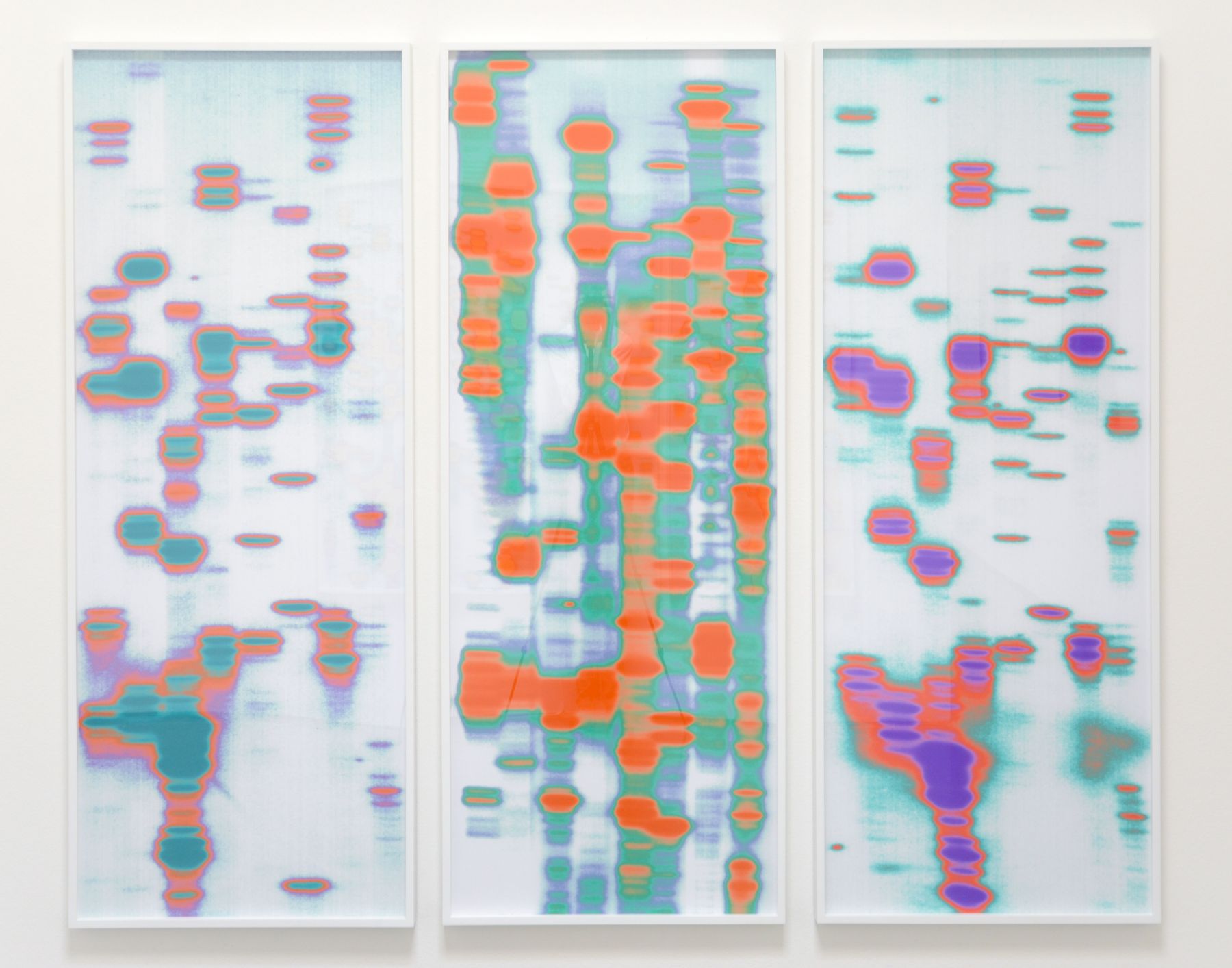Floating Lady II, 1970/2017
glass, wood and metal clamps
86 x 113 x 54 inches
Drawing for Psychic Sympathy, 1980
acrylic, graphite and colored pencil on paper
11 1/2 x 14 1/2 inches
Dedi of Desnefru, 1976
acrylic on canvas and wood
89 x 73 1/2 x 3 1/2
Jim Beam, 2017
acrylic on linen over aluminum
13 x 13 inches
Easy Aces, 1982
acrylic on canvas
64 x 95 x 4 1/8 inches
Zignette, 1997
acrylic on canvas and wood
39 x 25 1/2 x 3 inches
Ionia, 2007
acrylic on canvas
21 x 21 x 2 1/2 inches
Floating Lady II is complicated at best. Curiously situated at the threshold of two adjoining spaces, it was afforded no discrete views nor did it afford discrete views of certain other works. Not quite an elephant in a room and not unlike such things, it is a conundrum to be sure, torn between spaces, identities, and even time periods given it's duality in such matters. Thirty seven years separated its public reception.
As such with said observations, it seems almost textbook to what I began thinking about years ago as interdimensional objects, objects that occupy a liminal space physically as well as psychologically largely dependent on point of view and therefore dependent on a physical audience in real space let's call it, and also literally occupying an intermediate dimension between, for example, two or three, and possibly more. Further, as glass will always do, it also invites a virtual space by lighting condition, reflection, and again, viewer position or rather focal length. So, real and virtual space subsume mind and body relations in an elusive and unresolvable condition, one that embraces the dynamic despite being literally static, tenuous and precarious position to be sure. Had Floating Lady II been viewable in a completely isolated space, it would still have had the aforementioned complications but not without interference from other works in the show. I was assured by the gallery that this installation was typical and therefore in my opinion brave in its clutter to what could have been an otherwise more clarified and sublime viewing.
Speaking of such clutter, the wall objects in the show could also be dubbed interdimensional objects, though they were not in any way cluttered on their own terms. Carefully formed and painted, these objects displayed spatial transitions between dimensions, between architectural space and object and between viewer and relative positions. So, the peripatetic experience was in full effect with these artworks, restless all in their reconciliation (or not) of both linear and nonlinear space.
It's also worth noting that these works could not function nearly as well without the default white walls of the gallery. Certainly, the works that incorporated white in and of themselves would have been seen very differently against a green wall, for example Ionia, and certainly red if one wanted to go high contrast with the same one.
Despite a certain lack of clarity in the overall viewing experience, it was worth relating the relatively temporary objects with the relatively permanent ones. For both types made for a dynamic and puzzling viewing experience, one that reminds us of just how much the reception of art is largely dependent on a certain kind of viewing context, one that ultimately can not be controlled.



